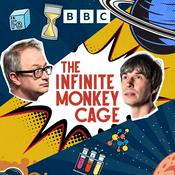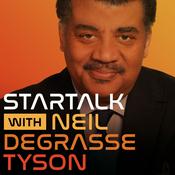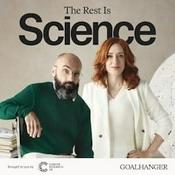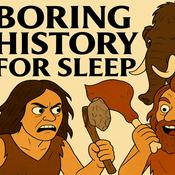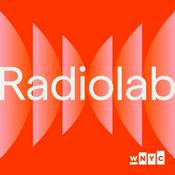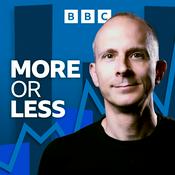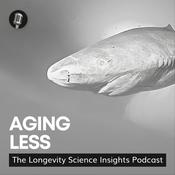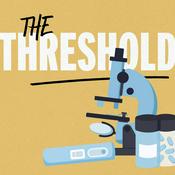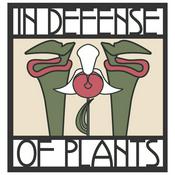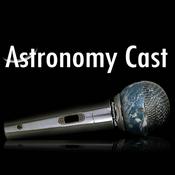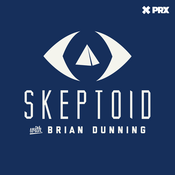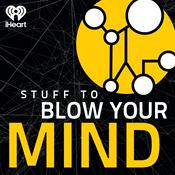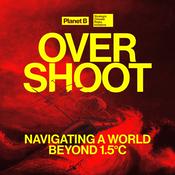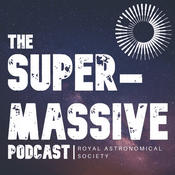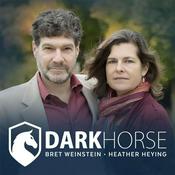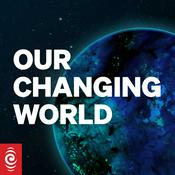160 episodes
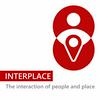
Trains, Planes, and Paved-Over Promises
15/12/2025 | 23 mins.
Hello Interactors,Spain’s high-speed trains feels like a totally different trajectory of modernity. America prides itself on being the tech innovator, but nowhere can we blast 180 MPH between city centers with seamless transfers to metros and buses…and no TSA drudgery. But look closer and the familiar comes into view — rising car ownership, rush-hour congestion (except in Valencia!), and growth patterns that echo America. I wanted to follow these parallel tracks back to the nineteenth-century U.S. rail boom and forward to Spain’s high-spe ed era. Turns out it’s not just about who gets faster rail or faster freeways, but what kind of growth they lock in once they arrive.TRAINS, CITIES, AND CONTRADICTIONSMy wife and I took high-speed rail (HSR) on our recent trip to Spain. My first thought was, “Why can’t we have nice things?”They’re everywhere.Madrid to Barcelona in two and a half hours. Barcelona to Valencia, Valencia back to Madrid. Later, Porto to Lisbon. Even Portugal is in on it. We glided out of city-center stations, slipped past housing blocks and industrial belts, then settled into the familiar grain of Mediterranean countryside at 300 kilometers an hour. The Wi-Fi (mostly) worked. The seats were comfortable. No annoying TSA.Where HSR did not exist or didn’t quite fit our schedule, we filled gaps with EasyJet flights. We did rent a car to seek the 100-foot waves at Nazaré, Portugal, only to be punished by the crawl of Porto’s rush-hour traffic in a downpour. Within cities, we took metros, commuter trains, trams, buses, bike share, and walked…a lot.From the perspective of a sustainable transportation advocate, we were treated to the complete “nice things” package: fast trains between cities, frequent rail and bus service inside them, and streets catering to human bodies more than SUVs. What surprised me, though, was the way these nice things coexist with growth patterns that look — in structural terms — uncomfortably familiar.In this video 👆 from our high-speed rail into Madrid, you see familiar freeway traffic but also a local rail running alongside. This site may be more common in NYC, DC, Boston, and even Chicago but less so in the Western US. Spain now operates one of the world’s largest high-speed networks. Spaniards reside inside a country roughly the size of Texas and enjoy about 4,000 kilometers of dedicated lines. This is Europe’s largest HSR system and one of only a handful of “comprehensive national networks” worldwide (Campos & de Rus, 2009; Perl & Goetz, 2015; UIC, 2024). Yet, like most of Europe, it has also seen a steady rise in car ownership. Across the EU, the average number of passenger cars per capita increased from 0.53 to 0.57 between 2011 and 2021, with Spain tracking that upward trend (Eurostat, 2023). Inland passenger-kilometers remain dominated by private cars, with rail — high-speed and conventional combined — taking a modest minority share (European Commission, 2021).Spain, in other words, has both extensive HSR and rising car ownership. The tension between the pleasant micro-geographies of rail stations, sidewalks, and metro lines and the macro-geography of an ever-familiar car-dependent growth regime makes it interesting from an economic geography standpoint. HSR in Spain is not so much an alternative to growth but a particular way of organizing it.America was once organized around rail. But our own car-dependent growth regime pushed it away. In the late nineteenth century, the United States was the HSR superpower of its time.From the 1830s through the early twentieth century, a dense mesh of rail lines shortened distances across the continent. By 1916, the U.S. rail network peaked at roughly 254,000 route miles — enough track to circle the globe multiple times. It then went into steep decline under competition from cars and trucks (Stover, 1997; The RAND Corporation, 2008). Rail was not merely a mode of transport. It was the primary infrastructure for integrating an entire continent’s economy.Chicago was the canonical beneficiary. William Cronon’s Nature’s Metropolis makes the case that rail-driven “time–space compression” did as much as natural endowments to elevate Chicago from muddy frontier town to the pivot of a continental system of grain, lumber, and meat (Cronon, 1991). Rail lines did not simply connect places that already mattered; they reorganized what mattered by funneling resources, capital, and people through specific nodes. Economic geography here is not just about location, but about which locations are made central by network design.This “time–space compression” traces back to Karl Marx’s 1857–58 Grundrisse, where he described the “annihilation of space by time” as capitalism’s drive to overcome spatial barriers through faster transport like railroads to enable quicker turnover of capital. Geographer David Harvey formalized the term “time–space compression” in his 1989 The Condition of Postmodernity, building on Marx to analyze how nineteenth-century rail networks (alongside telegraphs) shrank perceived distances during the first major wave of compression from the mid-1800s to World War I.At the metropolitan scale, those same rail technologies produced an earlier generation of “nice things” that sustainable transportation advocates now associate with Europe. Horsecar, cable car, and later electric streetcar networks radiated from downtowns into the countryside, creating early “rail suburbs” connected by frequent service and walkable main streets (Jackson, 1985; Fishman, 1987). Streetcar suburbs offered middle-class households a promise of a commuter train to a walkable compact neighborhood with quiet residential streets, relatively clean air, and quick access back to the city.But these “nice things” were never neutral amenities. Rail suburbs became instruments of class and, in the U.S. context, racial segregation. (Jackson, 1985; Fishman, 1987) Access to frequent rail service and detached houses on leafy streets was tightly bound to property ownership and exclusionary practices. Chicago’s rail-driven boom reshaped hinterlands into “commodity frontiers.” It, like many other cities later, externalized environmental costs onto landscapes far from the city’s sidewalks, station concourses, and less than desirable living conditions.RAILS, ROADS, AND REGIMESThe core paradox of economic growth is already visible here. Rail dramatically reduced transport costs and enabled agglomeration economies — thick labor markets, specialized firms, information spillovers — that enriched certain cities and classes. At the same time, those very efficiencies intensified resource extraction, spatial inequality, and political conflicts. Capital and power decided who could benefit and who would be pushed to the margins.America once ran on rails — dense, local, and linked — its own version of the “nice things” seen in Spain. But they carried with them the costs of congestion and expansion, sending us on a different path for mobility.The transition from rail to road in the twentieth-century United States is not just a story of transportation technology. It’s a story of how a country decided to scale itself.As motor vehicles diffused in the early 1900s, they interacted with existing urban and regional patterns largely established by rail networks. Postwar sprawl is largely a confluence of car-based living. Rising incomes, coupled with finance institutions rewarding new developments and cheaply manufactured cars, led households and corporate firms to trade close proximity for space (Glaeser & Kahn, 2004). Cars did not invent the desire for separation from industrial cities, but they multiplied the potential configurations.Federal policy amplified that shift. The 1956 National Interstate and Defense Highways Act created a 41,000-mile limited-access network funded primarily by federal fuel taxes. This embedded a new high-speed system on top of the pre-existing rail grid (National Archives, 2022; Weingroff, 1996). While railroads remained vital for freight, the intercity passenger market was increasingly organized around airports and interstates.Kenneth Jackson’s Crabgrass Frontier documents how federal mortgage guarantees, tax incentives, and highway construction converged to make owner-occupied suburban homes the normative “good life” for white middle-class Americans (Jackson, 1985). Robert Fishman’s Bourgeois Utopias similarly traces how suburban landscapes became aspirational geographies of domestic desire separated from the din and drive of the urban mire, rising from London to Los Angeles (Fishman, 1987).From an economic geography perspective, the postwar highway and aviation regime did not end agglomeration; it reconfigured it. Metropolitan regions sprawled outward along radial freeways and beltways. Airports became new nodes of connectivity, often surrounded by logistics parks and office clusters. The benefits of scale — large labor markets, diversified industries, hordes of consumers — remained, but the physical form of cities stretched into low-density, car-centric webs of cul-de-sacs.This system has its own “nice things” that I enjoy every day: door-to-door convenience on your own schedule, cheap flights between distant cities, and a logistic network that will deliver almost anything in two days…or even the next hour. But it also hardened a built environment that is difficult to retrofit for different “nice things” like rail. The very success of car-based ascendence created a geography whose path dependence only leaves alternatives of prohibitive transcendence.HSR projects worldwide tend to cluster where dense city pairs sit 300–800 km apart, with strong pre-existing travel demand and robust local transit systems (Campos and de Rus, 2009). National HSR strategies lead to “exclusive corridors,” “hybrid networks,” and “comprehensive national networks,” placing Spain firmly in the last camp (Perl and Goetz, 2015). It’s a country that is clearly attempting to knit together most major regional centers through high-speed lines.Spain’s choice of a comprehensive network is legible on the ground. High-speed services plug directly into metropolitan rail systems like metros, trams, and intercity bus terminals. Stations are embedded in walkable fabrics rather than isolated off highway interchanges (or distant airports EasyJet often targets). That integration creates what Robert Cervero calls a “transit metropolis”: a region where a workable fit exists between transit services and urban form, so that high-capacity lines feed and are fed by dense, mixed-use neighborhoods (Cervero, 1998).The economic geography of such a system is subtle. Spain’s HSR lines certainly reduce travel times between Madrid, Barcelona, Valencia, Seville, and other hubs. But the benefits do not simply diffuse evenly along the tracks. Research reviewing European cases shows that HSR is rarely “transformative” by itself. It mostly reinforces existing centers that can already capture agglomeration effects, especially when combined with supportive policies around land use and local transit. (Vickerman, 2018)In practice, that means Madrid and Barcelona feel closer together in time and opportunity space, while smaller intermediate cities may or may not see proportional gains. Agglomeration economies intensify in the big nodes. Firms can draw on larger markets, workers can access more jobs, and weekend tourism can boom. At the same time, the network expands the radius within which people can consider “everyday” trips. Like a business meeting in Barcelona, or a spontaneous weekend in Valencia to attend the opera inside Calatrava’s futuristic Opera House.This is where the growth paradox reappears. EU transport statistics show that, despite decades of rail investment, private cars still account for the majority of inland passenger-kilometers, with rail’s share modest but slowly increasing (European Commission, 2021). HSR does not eliminate car dependence so much as layer another growth-enabling system on top of it. The same reduction in time–space frictions that makes HSR delightful to ride also facilitates more and longer trips overall, even if some of them substitute for flights.From the traveler’s perspective, a seamless itinerary from Barcelona to Valencia to Madrid feels like a triumph of infrastructure. From an economic geography lens, it is a particular resolution of the trade-off between agglomeration and externalities: more connectivity, more opportunity, more consumption, and more pressure on housing, landscapes, and local services.If Spain’s network represents one way of managing the growth paradox, what would it take for the United States to “have nice things” again in the form of HSR?At first glance, the answer seems straightforward: build lines between the major city pairs where distances are right and air travel is heavy — the Northeast Corridor, California’s Los Angeles–San Francisco line, maybe a Chicago-centered Midwest hub. The HSR literature broadly supports this corridor logic. Successful lines typically connect large, dense cities with strong existing flows, while weaker corridors struggle to generate enough ridership to justify their capital costs (Campos and de Rus, 2009; Perl and Goetz, 2015).But those studies also assume something the United States often lacks: the local transit and land-use framework that lets HSR actually function as part of everyday mobility.Hong Kong’s “Rail + Property” model is instructive here (Cervero and Murakami’s, 2009). By combining transit infrastructure with dense, mixed-use property development around stations — and capturing a share of the resulting land value increases — Hong Kong has been able to finance much of its rail network while creating environments where rail is the default option for many trips. The value capture mechanisms and zoning regimes are context-specific, but the broader lesson travels: HSR works best when station areas are intense agglomeration zones, not park-and-ride lots surrounded by arterials.In much of the United States, however, rail stations — where they exist at all — sit in landscapes optimized for cars. Many potential HSR terminal sites are currently flanked by freeways, surface parking, and single-use zoning. Introducing high-speed service into such environments without altering their land-use and transit logics risks reproducing the patterns the research warns against: an expensive, symbolic infrastructure with limited transformative impact.There is also the matter of scale. Low-density sprawl is, in part, the spatial expression of a car-and-highway technological regime. HSR requires a different spatial regime: one where trip volumes are high between specific nodes and where a substantial share of people and jobs cluster within catchments of good local transit. Without that, high-speed lines struggle to fill trains. Even worse, the per-passenger carbon and financial math becomes far less compelling.None of this makes HSR impossible in the U.S. It just means that “nice things” are not only about technology or even capital. They are about the entire bundle of institutions, regulations, and growth patterns that give that technology something to plug into. The United States did this once with rail, then again with highways and aviation. Each time, the network we built reorganized economic geography in its own image.HAVING NICE THINGS, ON PURPOSEWhat I learned riding Spanish high-speed trains is not that the United States should abandon its HSR ambitions. Nor did the experience confirm a simple morality tale where Europe has virtuous trains and America has sinful freeways.Instead, it underscored how transportation technologies are always embedded in larger growth regimes, and how those regimes come with paradoxes baked in. Rail made Chicago while it also helped empty hinterlands and deepen urban inequalities. Highways and airports made postwar American suburbs. They also locked in carbon-intensive sprawl and hollowed out many urban cores. Spain’s HSR enables low-carbon intercity travel and multiplies the number of places you can reasonably visit for a weekend, while car ownership quietly continues to rise.While economic geography gives us a language of agglomeration economies, time–space compression, and path dependence, this question remains: “why can’t we have nice things?” It becomes less about copying Spanish trains and more about asking what kind of growth we are willing to organize ourselves around.If the United States wants HSR to be one of its “nice things” again, it will have to be done on purpose and in sequence. Yes it requires corridors where the numbers pencil out, but also land-use reform around stations, reinvestment in local transit, and governance mechanisms. We’ll need structures that not only capture some of the value that rail can generate but also be used to perpetually fund the system. It will mean recognizing that the very digital tools we already rely on — route planners, booking apps, algorithmic pricing — can either deepen our commitment to car-and-flight geographies or be leveraged to make multi-modal rail the path of least resistance. And in a country where residents in every metropolitan area reject attempts at building new airports, HSR is the only viable alternative. SeaTac’s former operations director once told me (over dinner on a train!) the he believes Denver’s 1995 airport may be America’s last new greenfield airport.What’s frustrating is America knows how to do big transportation projects. We’ve done it before at different times, with different technologies, and with different winners. Spain was a reminder that “nice things” are possible and they’re never just amenities. They are big decisions about how to grow big. They’re also about who benefits from proximity and what kinds of landscapes we are willing to live with — even if and when the trains do arrive.ReferencesCampos, J., & de Rus, G. (2009). Some stylized facts about HSR: A review of HSR experiences around the world. Transport Policy.Cervero, R. (1998). The transit metropolis: A global inquiry. Island Press.Cervero, R., & Murakami, J. (2009). Rail and property development in Hong Kong: Experiences and extensions. Urban Studies.Cronon, W. (1991). Nature’s metropolis: Chicago and the Great West. W. W. Norton.European Commission. (2021). EU transport in figures: Statistical pocketbook 2021. Publications Office of the European Union.Eurostat. (2023, May 30). Number of cars per inhabitant increased in 2021. Eurostat News.Fishman, R. (1987). Bourgeois utopias: The rise and fall of suburbia. Basic Books.(Internet Archive)Glaeser, E. L., & Kahn, M. E. (2004). Sprawl and urban growth. In J. V. Henderson & J. F. Thisse (Eds.), Handbook of regional and urban economics (Vol. 4, pp. 2481–2527). Elsevier.Jackson, K. T. (1985). Crabgrass frontier: The suburbanization of the United States. Oxford University Press.(Internet Archive)National Archives. (2022). National Interstate and Defense Highways Act (1956). U.S. National Archives.(National Archives)Perl, A. D., & Goetz, A. R. (2015). Corridors, hybrids and networks: Three global development strategies for high speed rail. Journal of Transport Geography.Stover, J. F. (1997). American railroads (2nd ed.). University of Chicago Press.(Internet Archive)The RAND Corporation. (2008). The state of U.S. railroads: A review of capacity and performance. RAND.UIC (International Union of Railways). (2024). HSR atlas 2024 edition. UIC.Vickerman, R. (2018). Can HSR have a transformative effect on the economy? Transport Policy, 62, 31–37.Weingroff, R. F. (1996). Federal-Aid Highway Act of 1956: Creating the Interstate System. Public Roads. This is a public episode. If you would like to discuss this with other subscribers or get access to bonus episodes, visit interplace.io

An Economic Geography of Complicity and Control
23/11/2025 | 27 mins.
Hello Interactors,I’m back! After a bit of a hiatus traveling Southern Europe, where my wife had meetings in Northern Italy and I gave a talk in Lisbon. We visited a couple spots in Spain in between. Now it’s time to dive back into our exploration of economic geography. My time navigating those historic cities — while grappling with the apps on my phone — turned out to be the perfect, if slightly frustrating, introduction to the subject of the conference, Digital Geography.The presentation I prepared for the Lisbon conference, and which I hint at here, traces how the technical optimism of early desktop software evolved into the all-encompassing power of Platform Capital. We explore how digital systems like Airbnb and Google Maps have become more than just convenient tools. They are the primary architects of urban value. They don’t just reflect economic patterns. They mandate them. They reorganize rent extraction by dictating interactions with commerce and concentrating control. This is the new financialized city, and the uncomfortable question we must face is this: Are we leveraging these tools toward a new beneficial height, or are the tools exploiting us in ways that transcends oversight?CARTOGRAPHY’S COMPUTATIONAL CONVERGENCEI was sweating five minutes in when I realized we were headed to the wrong place. We picked up the pace, up steep grades, glissading down narrow sidewalks avoiding trolley cars and private cars inching pinched hairpins with seven point turns. I was looking at my phone with one eye and the cobbled streets with the other.Apple Maps had led us astray. But there we were, my wife and I, having emerged from the metro stop at Lisbon’s shoreline with a massive cruise ship looming over us like a misplaced high-rise. We needed to be somewhere up those notorious steep streets behind us in 10 minutes. So up we went, winding through narrow streets and passages. Lisbon is hilly. We past the clusters of tourists rolling luggage, around locals lugging groceries.I had come to present at the 4th Digital Geographies Conference, and the organizers had scheduled a walking tour of Lisbon. Yet here I was, performing the very platform-mediated tourism that the attendees came to interrogate. My own phone was likely using the same mapping API I used to book my AirBnB. These platforms were actively reshaping the Lisbon around us. The irony wasn’t lost on me. We had gathered to critically examine digital geography while simultaneously embodying its contradictions.That became even more apparent as we gathered for our walking tour. We met in a square these platform algorithms don’t push. It’s not “liked”, “starred”, nor “Instagrammed.” But it was populated nonetheless…with locals not tourists. Mostly immigrants. The virtual was met with reality.What exactly were we examining as we stood there, phones in hand, embodying the very contradictions we’d gathered to critique?Three decades ago, as an undergraduate at UC Santa Barbara, I would have understood this moment differently. The UCSB geography department was riding the crest of the GIS revolution then. Apple and Google Maps didn’t exist, and we spent our days digitizing boundaries from paper maps, overlaying data layers, building spatial databases that would make geographic information searchable, analyzable, computable. We were told we were democratizing cartography, making it a technical craft anyone could master with the right tools.But the questions that haunt me now — who decides what gets mapped? whose reality does the map represent? what work does the map do in the world? — remained largely unasked in those heady days of digital optimism.Digital geography, or ‘computer cartography’ as we understood it then, was about bringing computational precision to spatial problems. We were building tools that would move maps from the drafting tables of trained cartographers to the screens of any researcher with data to visualize. Marveling at what technology might do for us has a way of stunting the urge to question what it might be doing to us.The field of digital geography has since undergone a transformation. It’s one that mirrors my own trajectory from building tools and platforms at Microsoft to interrogating their societal effects. Today’s digital geography emerges from the collision of two geography traditions: the quantitative, GIS-focused approach I learned at UCSB, and critical human geography’s interrogation of power, representation, and spatial justice. This convergence became necessary as digital technologies escaped the desktop and embedded themselves in everyday urban life. We no longer simply make digital maps of cities and countrysides. Digital platforms are actively remaking cities themselves…and those who live in them.Contemporary digital geography, as examined at this conference, looks at how computational systems reorganize spatial relations, urban governance, and the production of place itself. When Airbnb’s algorithm determines neighborhood property values, when Google Maps’ routing creates and destroys retail corridors, when Uber’s surge pricing redraws the geography of urban mobility — these platforms don’t describe cities so much as actively reconstruct them. The representation has become more influential or ‘real’ than the reality itself. This is much like the hyperreality famously described by the French cultural theorist Jean Baudrillard — a condition where the simulation or sign (like app interfaces) replaces and precedes reality. In this way, the digital map (visually and virtually) has overtaken the actual territory in importance and impact, actively shaping how we perceive and interact with the real world.As digital platforms become embedded in everyday life, we are increasingly living in a simulation. The more digital services infiltrate and reconstitute urban systems the more they evade traditional governance. Algorithmic mediation through code written to influence the rhythm of daily life and human behavior increasingly determines who we interact with and which spaces we see, access, and value. Some describe this as a form of data colonialism — extending the logic of resource extraction into everyday movements and behaviors. This turns citizens into data subjects. Our patterns feed predictive models that further shape people, place…and profits. These aren’t simple pipes piped in, or one-way street lights, but dynamic architectures that reorganize society’s rights.LISBON LURED, LOST, AND LIVEDThe scholars gathered in Lisbon trace precisely how digital platforms restructure housing markets, remake retail ecologies, and reformulate the rights of humans and non-humans. Their work, from analyzing platform control over cattle herds in Brazil to tracking urban displacement, exemplifies the conference’s focus: making visible the often-obscured mechanisms through which platforms reshape space.Two attendees I met included Jelke Bosma (University of Amsterdam), who researches Airbnb’s transformation of housing into asset classes, and Pedro Guimarães (University of Lisbon), who documents how platform-mediated tourism hollows out local retail. At the end of the tour, when a group of us were looking to chat over drinks, Pedro remarked, “If you want a recommendation for an authentic Lisbon bar experience, it no longer exists!”Yet, even as I navigated Lisbon using the very interfaces these scholars’ critique, I was reminded of this central truth: we study these systems from within them. There is no outside position from which to observe platform urbanism. We are all, to varying degrees, complicit subjects. This reflection has become central to digital geography’s method. It’s impossible to claim critical distance from systems that mediate our own spatial practices. So, instead, a kind of intrinsic critique is developed by understanding platform effects through our own entanglements.Lisbon has become an inadvertent laboratory for this critique. Jelke Bosma’s analysis of AirBnB reveals how the platform has facilitated a shift from informal “home sharing” to professionalized asset management, where multi-property hosts control an increasing share of urban housing stock. His research shows “professionally managed apartments do not only generate the largest individual revenues, they also account for a disproportionate segment of the total revenues accumulated on the platform”. This professionalization is driven by AirBnB’s business model and its investment in platform supporting “asset-based professionalization,” which primarily benefits multi-listing commercial hosts. He further explains that AirBnB’s algorithm “rewards properties with high availability rates,” creating what he calls “evolutionary pressures” on hosts to maximize their listings’ availability. This incentivizes them to become full-time tourist accommodations, reducing the competitiveness of long-term residential renting.The complexity of this ecosystem was also apparent during our Barcelona stop. What I booked as an “Airbnb” was a Sweett property — a competitor platform that operates through AirBnb’s APIs. This apartment featured Bluetooth-enabled locks and smart home controls inserted into an 1800s building. Sweett’s model demonstrates how platform infrastructure not only becomes an industry standard but is leveraged and replicated by competitors in a kind of coopetition based on the pricing algorithms AirBnB normalized.In Lisbon, my rental sat in a building where every door was marked with AL (Alojamento Local), the legal framework for short-term rentals. No permanent residents remained; the architecture itself had been reshaped to platform specifications: fire escape signage next to framed photos, fire extinguishers mounted to the wall, and minimized common spaces upon entry. It’s more like a hotel disaggregated into independent units.Pedro Guimarães’s work provides the commercial counterpart to Jelke’s residential analysis, focusing on how platforms reshape urban consumption. His longitudinal study demonstrates that the “advent of mass tourism” has triggered a fundamental “adjustment in the commercial fabric” of Lisbon’s city center.This platform-mediated transformation involves a significant shift from services catering to locals to spaces optimized for leisure and consumption. Pedro’s data confirms a clear decline and “absence of Food retail” and convenience shops. These essential services are replaced by a “new commercial landscape” dominated by HORECA (hotels, restaurants, and cafes), which consolidates the area’s function as a tourist destination.(3)Crucially, the new businesses achieve algorithmic visibility by manufacturing “authenticity”. They leverage local culture and history, sometimes even appropriating the decor of previous, traditional establishments, as part of “routine business practices as a way of maximizing profit”. The result is the “broader construction of a new commercial ambiance” where local food and goods are standardized and adapted to meet international tourist expectations.(3)My own searches validated these findings. Searching for restaurants on Google Maps throughout Southern Europe produced a bubble of highly-rated establishments near tourist sites, many featuring nearly identical, tourist-friendly menus. The platforms had learned and enforced preferences, creating a Lisbon curated only for visitors. Furthermore, data exhaust from tourist movements becomes a resource for further optimization. Google’s Popular Times feature creates feedback loops where visibility generates visits, which reinforce visibility. The city becomes legible to itself through platform data, then reshapes itself to optimize what platforms measure.The Lisbon government, while complicit, also shows resistance. Both scholars highlighted municipal attempts to regulate platform effects, including issuing licensing requirements for AirBnB, zoning restrictions, and promoting local commerce apps that compete with global platforms (e.g., Cabify vs. Uber). These interventions reveal platform urbanism can be contested. However, as Jelke noted, platforms evolve faster than regulation, finding workarounds that maintain extraction while performing compliance.All through the trip, I felt my own quiet sense of complicity. Every ride we called, every Google search we ran, every Trainline ticket I purchased, fueled the very datasets everyone was dissecting. It’s an uneasy position for a critical digital geographer — studying problematic systems we help sustain. We are forced to understand these infrastructures by seeing. Can that inside view start seeking a new urban being?CODE CRACKED CITIES. GOVERNANCE GONEMy conference presentation leveraged my insider vantage from three decades at Microsoft. I traced how these digital infrastructures have sunk into everyday life by reshaping labor, space, and governance. From early desktop software I helped to build to today’s platform urbanism, I showed how productivity tools became cloud platforms that now coordinate work, logistics, and mobility across cities.My framing used a notion of embeddedness through the lens of three key figures in the literature: Karl Polanyi, a political economist who argued that markets are always “embedded” in social and political institutions rather than operating on their own; Mark Granovetter, a sociologist who showed that economic action is structured by concrete social networks and relationships; and Joseph Schumpeter, an economist who described capitalism as driven by “creative destruction,” the continual remaking of industries through innovation and destruction. Platforms help mediate mobility, labor, commerce, and governance, even as they position themselves at arm’s length from the regulatory and civic structures that historically governed urban infrastructures.This evolution is paradoxical. As platforms weave themselves into the operational fabric of urban life, they also recast the division of responsibilities between state, market, and infrastructure provider. Their ability to sit slightly outside traditional regimes of oversight allows them to appear as ready-made “fixes” for governments and consumers at multiple scales. Yet each fix comes with systemic costs, deepening dependencies on opaque, tightly coupled infrastructures and amplifying the vulnerabilities of urban systems when those infrastructures fail.This progression reveals distinct phases of infrastructural transformation. It began in the Desktop Era (1980s-1990s) when I started at Microsoft and software was fixed to devices, localizing information work on individual desktops. Updates arrived episodically on physical media like floppy disks — users controlled when to install them. The shift to local area networks gave IT departments a hand in that control. Soon the Internet was commercialized which fundamentally altered not just how software circulated but how it was installed and updated. How it was governed. What once required user consent — inserting a disk, clicking “install” — became silent, automatic, and infrastructural. Today’s cloud services and IoT extend this transformation, embedding computational governance into vehicles, supply chains, and bodies themselves.This progression reveals distinct phases of infrastructural transformation. The Desktop Era (1980s-1990s) embedded information work in individual devices — the fix was productivity, the limit was scalability. The Network Era (1990s-2000s) transformed software into continuous services — the fix promised seamless coordination, the exposure was infrastructural dependency. The Platform Era (2000s-2010s) decoupled software from devices entirely through APIs and cloud computing — the fix was coordination at scale, the cost was asymmetric control. The current IoT and Surveillance Era embeds platform logic in everyday urban environments — the fix is pervasive coordination. This creates a total dependency on opaque infrastructures provided primarily by three companies: Google, Amazon, and Microsoft. This chokepoint is what contributes to global vulnerability and cascading failures.Recent large-scale cloud incidents, such as the latest AWS outage in Virginia in October — a week before the conference — make this evident. When a single region fails, payment systems, logistics platforms, and mobility services stall simultaneously. This pattern echoes an earlier cloud-network outage in 2021, in the same Virginia region, that effectively took much of Lisbon offline for hours, disrupting everything from transit information to local commerce. In both cases, what looks like flexible, placeless digital infrastructure turns out to be highly geographically concentrated and deeply embedded in local urban systems.And yet, in nearly every case, these platforms really do operate as fixes at many different geographical scales. For capital, they open new rent-extraction terrains. For workers, they provide precarious income patches through part-time gig work. For users, they deliver connectivity and convenience. But a paradox emerges. Those same apps include affective hooks: user interfaces offering intermittent rewards — dopamine hits stemming from posts, likes, and ratings — embedded within endless, ad-riddled feeds. For cities, they promise smooth, efficient solutions to chronic problems. Yet as my presentation argued, these fixes are mutually reinforcing, binding participants into infrastructures of dependency that appear empowering while deepening exposure to systemic risk.The paradox is clearest in places like the Sweett apartment in Barcelona. For users, it’s frictionless: Bluetooth locks, smart controls, and seamless check-in. For Sweett it’s all running on AirBnB’s own APIs even as they compete with AirBnB. For locals, the same infrastructure can help homeowners supplement income by renting a room, but it mostly converts affordable real estate into a short-term rental market. This drives up values, rents, and displacement. Platform standards like this spread until they feel inevitable. The logic embeds so deeply in the housing system that not optimizing for transient guests starts to seem irrational. Eventually, alternative futures for the neighborhood become hard to imagine and politically unviable.What distinguishes digital platforms from earlier infrastructural transformations is their selective embeddedness. At the micro scale, interfaces shape conduct through programmable boundaries. At the meso scale, standards lock institutions into ecosystems. At the macro scale, chokepoints concentrate control in firms whose decisions cascade globally. Across all scales, platforms govern without being governed. They embed coordination while evading accountability.The conference made clear that digital geography has fully evolved from my days studying ‘computer cartography’ in the 80s. It’s scaled to meet a world organized by the infrastructures I went on to help build. We are no longer observing digital representations of space. We’re mapping out the origins of a new way of thinking about space using algorithms. My tenure at Microsoft, spent building tools that would transform into embedded, governing platforms, was a preview of the world we now inhabit. This is a world where continuous deployment has become continuous urban reorganization. The silence of the automatic software update metastasized into the silent, pervasive governance of the city itself.Lisbon, then, is not merely a case study but a dramatic staging of hyperreality. The Alojamento Local (AL) sign outside our Lisbon apartment door is not a description of a short-term rental; it is a code enforced reality optimized for a tourist’s online profile. The digital map, our simplified version of reality, has not just overtaken the actual territory; it now precedes it, dictating its function and challenging its original meaning.This convergence leaves the critical digital geographer in an inherently unstable ethical position. Studying problematic systems while structurally forced to sustain them requires critiquing the data exhaust our own movements and decisions generate.This deep understanding of digital platforms effects, gained from the trenches, is an asset. How else would this complex entanglement get revealed? It begs to move beyond just observing platform effects to articulating a collective response to this fundamental question: How do we encode accountability back into these infrastructures and rebuild a foundation for civic life that is not merely an optimization of its own surveillance? This is a public episode. If you would like to discuss this with other subscribers or get access to bonus episodes, visit interplace.io

Spirals of Enclosure
05/10/2025 | 36 mins.
Hello Interactors,Fall is in full swing here in the northern hemisphere, which means it’s time to turn our attention to economics and economic geography. Triggered by a recent podcast on the origins of capitalism, I thought I’d kick off by exploring this from a geography perspective.I trace how violence, dispossession, and racial hierarchy aren’t simple externalities or accidents. They emerge out of a system that organized itself and then spread. Capitalism grew out of dispossession of land and human autonomy and became a dominant social and economic structure. It’s rooted in violence that became virtuous and centuries later is locked-in. Or is it?EMERGING ENGLISH ENCLOSURESThe dominant and particular brand of capitalism in force today originates in England. Before English landlords and the state violently seized common lands back in the 1300s, economic life was embedded in what historian E.P. Thompson called “moral economies”.(1) These were systems of survival where collective responsibility was managed through custom, obligation, and shared access to resources. Similar systems existed elsewhere. Long before Europeans arrived at the shores of what is now called North America, Haudenosaunee longhouse economies were sophisticatedly organized around economies of reciprocity. Further south, Andean ayllu communities negotiated labor obligations and access to land was shared. West African systems featured land that belonged to communities and ancestors, not individuals.Back in medieval English villages, commons weren’t charity, they were infrastructure. Anyone could graze animals or gather firewood. When harvests failed, there were fallbacks like hunting and gathering rights, seasonal labor sharing, and kin networks. As anthropologist Stephen Gudeman shows, these practices reflected cultures of mutual insurance aimed at collective resilience, not individual accumulation.(2)Then landlords, backed by state violence, destroyed this system to enrich themselves.From 1348-1349, the bubonic plague killed perhaps half of England’s population. This created a labor shortage that gave surviving so-called peasants leverage. For the first time they could demand higher wages, refuse exploitative landlords, or move to find better conditions.The elite mobilized state violence to reverse this. In 1351 the state passed The Statute of Labourers — an attempt to freeze wages and restrict worker movement. This serves as an early signal that reverberates today. When property and people come in conflict, the state sides with property. Over the next two centuries, landlords steadily enclosed common lands, claiming shared space as private property. Peasants who resisted were evicted, sometimes killed.Initial conditions mattered enormously. England had a relatively weak monarchy that couldn’t check landlord aggression like stronger European states did. It also had growing urban markets creating demand for food and wool and post-plague labor dynamics that made controlling land more profitable than extracting rents from secure peasants.As historian J.M. Neeson details, enclosure — fencing in private land — destroyed social infrastructure.(3) When access to common resources disappeared, so did the safety nets that enabled survival outside of market and labor competition. People simply lost the ability to graze a cow, gather fuel, glean grain, or even rely on neighbors’ obligation to help.This created a feedback loop:Each turn made the pattern stronger. Understanding how this happens requires grasping how these complex systems shaped the very people who reproduced them.The landlords driving enclosure weren’t simply greedy villains. Their sense of self, their understanding of what was right and proper, was constituted through relationships to other people like them, to their own opportunities, and to authorities who validated their actions. A landlord enclosing commons likely experienced this as “improvement”. They believed they were making the land productive while exercising newly issued property rights. Other landlords were doing it, parliament legalized it, and the economics of the time justified it. The very capacity to see alternatives was constrained by relational personal and social positions within an emerging capitalistic society.This doesn’t excuse the violence or diminish responsibility. But it does reveal how systems reproduce themselves. This happens not primarily through individual evil but through relationships and feedback loops that constitute people’s identities and sense of what’s possible. The moral judgment remains stark. These were choices that enriched someone by destroying someone else’s means of survival. But the choices were made by people whose very selfhood was being constructed by the system they were creating.Similarly, displaced peasants resisted in ways their social positions made possible. They rioted, appealed to historical customary rights, attempted to maintain the commons they relied on for centuries. Each turn of the spiral didn’t just move resources, it remade people. Peasants’ children, born into a world without commons, developed identities shaped by market dependence — renting their labor in exchange for money. What had been theft became, over generations, simply “how things are.”By the mid-16th century, England had something new. They’d created a system where most people owned no land, had no customary rights to subsistence, and had to compete in labor markets to survive. This was the essence of capitalism’s emergence. It wasn’t born out of markets (they existed everywhere for millennia) but as market dependence enforced through dispossession. Out of this emerged accumulated actions of actors whose awareness and available alternatives were themselves being shaped by the very system they were simultaneously shaping and sustaining.REPLICATING PATTERNS OF PLANTATIONSOnce capitalism emerged in England through violent enclosure, its spread wasn’t automatic. Understanding how it became global requires distinguishing between wealth extraction (which existed under many systems) and capitalist social relations (which require specific conditions).Spain conquered vast American territories, devastating indigenous populations through disease, warfare, and forced labor. Spanish extraction from mines in the 16th century — like Potosí in today’s Bolivia — were worked by enslaved indigenous and African peoples under conditions that killed them in staggering numbers. Meanwhile, Portugal developed Atlantic island sugar plantations using enslaved African labor. This expansion of Portuguese agriculture on Atlantic islands like Madeira and São Tomé became a blueprint for plantation economies in the Americas, particularly Brazil. The brutally efficient system perfected there for sugar production — relying on the forced labor of enslaved Africans — was directly transplanted across the ocean, leading to a massive increase in the scale and violence of the transatlantic slave trade.Both empires generated massive wealth from these practices. If colonial plunder caused capitalism, Spain and Portugal should have industrialized first. Instead, they stagnated. The wealth flowed to feudal monarchies who spent it on palaces, armies, and wars, not productive reinvestment. Both societies remained fundamentally feudal.England, with virtually no empire during its initial capitalist transformation, developed differently because it had undergone a different structural violence — enclosure of common land that created landless workers, wage dependence, and market competition spiraling into self-reinforcing patterns.But once those capitalist social relations existed, they became patterns that spread through violent imposition. These patterns destroyed existing economic systems and murdered millions.English expansion first began close to home. Ireland and Scotland experienced forced enclosures as English landlords exported the template — seize land, displace people, create private regimes, and force the suffering to work for you. This internal colonialism served as testing ground for techniques later deployed around the world.When English capitalism encountered the Caribbean — lands where indigenous peoples had developed complex agricultural systems and trade networks — the Spanish conquest had already devastated these populations. English merchants and settlers completed the destruction, seizing lands indigenous peoples had managed for millennia while expanding the brutal, enslaved-based labor models pioneered by the Spanish and Portuguese for mining and sugar production.The plantations English capitalists built operated differently than earlier Portuguese and Spanish systems. English plantation owners were capitalists, not feudal lords. But this was also not simply individual choice or moral character. They were operating within and being shaped by an emerging system of capitalist social relations. Here too they faced competitive pressures to increase output, reduce costs, and compete with other plantation owners. The system’s logic — accumulate to accumulate more — emerged from relational dynamics between competing capitalists. The individual identities as successful plantation owners was constituted through their position within the competitive networks in which they coexisted.New location, same story. Even here this systemic shaping doesn’t absolve individual responsibility for the horrors they perpetrated. Enslaved people were still kidnapped, brutalized, and worked to death. Indigenous peoples were still murdered and their lands still stolen. But understanding how the system shaped what seemed necessary or moral to those positioned to benefit helps explain how such horror could be so widespread and normalized.This normalization created new spirals:This pattern then replicated across even more geographies — Jamaica, Barbados, eventually the American South — each iteration destroying existing ways of life. As anthropologist Sidney Mintz showed, this created the first truly global capitalist commodity chain.(4) Sugar produced by enslaved Africans and indigenous peoples — on their stolen land — sweetened the tea for those English emerging factory workers — themselves recently dispossessed through enclosure.At the same time, it’s worth calling attention, as Historians Walter Rodney, Guyanese, and Paul Tiyambe Zeleza, Malawian, have point out, that African societies weren’t passive.(5,6) Some kingdoms initially engaged strategically by trading captives from rival groups and acquiring weapons. These choices are often judged harshly, but they were made by people facing threats to their very existence. They were working with frameworks developed over centuries that suddenly confronted an unprecedented system of extractive violence. Historians Linda Heywood and John Thornton show that African economic strength and political organization meant Africans often “forced Europeans to deal with them on their own terms” for centuries, even as the terms of engagement became increasingly constrained.(7) This moral complexity matters. These were real choices with devastating consequences, made by people whose capacity to perceive alternatives was constrained by their eventual oppressors amidst escalating violence by Europeans.Native American scholars have documented similar patterns of constrained agency in indigenous contexts. Historian Ned Blackhawk, Western Shoshone, shows how Native nations across North America made strategic choices — like forming alliances, adapting governance structures, and engaging in trade — all while navigating impossible pressures from colonial expansion.(8) Historian Jean O’Brien, White Earth Ojibwe, demonstrates how New England indigenous communities persisted and adapted even as settler narratives and violence worked to wipe them out of existence.(9) They were forced to make choices about land, identity, and survival within systems designed to eliminate them. These weren’t failures of resistance but strategic adaptations made by people whose frameworks for understanding and practicing sovereignty, kinship, and territorial rights were being violently overwritten and overtaken by colonial capitalism.Europeans increasingly controlled these systems through superior military technology making resistance futile. Only when late 19th century industrial weapons were widely wielded — machine guns, munitions, and mechanisms manufactured through capitalism’s own machinations — could Europeans decisively overwhelm resistance and complete the colonial carving of Africa, the Americas, and beyond.LOCKING-IN LASTING LOOPSOnce patterns spread and stabilize, they become increasingly difficult to change. Not because they’re natural, but because they’re actively maintained by those who benefit.Capitalism’s expansion created geographic hierarchies that persist today: core regions that accumulate wealth and peripheral regions that get extracted from. England industrialized first through wealth stolen from colonies and labor dispossessed through enclosure. This gave English manufacturers advantages. Namely, they could sell finished goods globally while importing cheap raw materials. Colonies were forced at gunpoint to specialize in export commodities, making them dependent on manufactured imports. That dependence made it harder to develop their own industries. Once the loop closed it became enforced — to this day through institutions like the IMF and World Bank.Sociologists Marion Fourcade and Kieran Healy show how these hierarchies get naturalized through moral categories that shape how people — including those benefiting from and those harmed by the system — come to understand themselves and others.(10) Core regions are portrayed as “developed,” “modern,” “efficient.” Peripheral regions are called “backward,” “corrupt,” “informal.” These aren’t just ideological justifications imposed from above but categories that constitute people’s identities. They shape how investors see opportunities, how policy makers perceive problems, and how individuals understand their own worth.Meanwhile, property rights established through colonial theft get treated as legitimate. They are backed by international law and written by representatives of colonial powers as Indigenous land claims continue to get dismissed as economically backward. This doesn’t happen through conscious conspiracies. It’s because the frameworks through which “economic rationality” itself is understood and practiced were constructed through and for capitalist social relations. People socialized into these frameworks genuinely perceive capitalist property relations as more efficient, more rational. Their (our?) very capacity to see alternatives is constrained by identities formed within the system in which they (we?) exist.These patterns persist because they’re profitable for those with power and because people with power were shaped by the very system that gives them power. Each advantage reinforces others. It then gets defended, often by people who genuinely believe they’re defending rationality and efficiency. They (we?) fail to fathom how their (our?) frameworks for understanding economy were forged through forceful and violent subjugation.INTERRUPTING INTENSIFICATIONViewing capitalism’s complex geographies shows its evolution is not natural or even inevitable. It emerged, and continues to evolve, as a result of shifting relationships and feedbacks at multiple scales. Recognizing this eventuality creates space for imagining and building more ethical derivatives or alternatives.If capitalism emerged from particular violent interactions between people in specific places, then different interactions could produce different systems. If patterns locked in through feedback loops that benefit some at others’ expense, then interrupting those loops becomes possible.Even within capitalist nations, alternative arrangements have persisted or been fought for. Nordic countries and Scotland maintain “Everyman’s Right” or “Freedom to Roam” laws. These are legal traditions allowing public access to private land for recreation, foraging, and camping. These represent partial commons that survived enclosure or were restored through political struggle, showing that private property needn’t mean total exclusion. Even in countries that participate in capitalist economies. In late 19th century America, Henry George became one of the nation’s most widely read public intellectuals. More people attended his funeral than Abraham Lincoln’s. He argued that land value increases resulting from community development should be captured through land value taxes rather than enriching individual owners. His ideas inspired single-tax colonies, urban reform movements, and influenced progressive era policies. Farmers organized cooperatives and mutual aid societies, pooling resources and labor outside pure market competition. Urban communities established settlement houses, cooperative housing, and neighborhood commons. These weren’t marginal experiments, they were popular movements showing that even within capitalism’s heartland, people continuously organized alternatives based on shared access, collective benefit, and relationships of reciprocity rather than pure commodity exchange.Or, consider these current examples operating at different scales and locations:Community land trusts in cities like Burlington, Vermont remove properties from speculative markets. These trusts separate ownership of the land from the buildings on it, allowing the nonprofit land trust to retain ownership of the land while selling homes at affordable prices with resale restrictions. While they’re trying to break the feedback loop where rising prices displace residents, gentrification and displacement continue in surrounding market-rate housing. This shows how alternatives require scale and time to fully interrupt established feedback loops.Zapatista autonomous municipalities in Chiapas, Mexico governed 300,000 people through indigenous forms of collective decision-making, refusing both state control and capitalist markets — surviving decades of Mexican government counterinsurgency backed by US military support. In 2023, after three decades of autonomy, the Zapatistas restructured into thousands of hyperlocal governments, characterizing the shift as deepening rather than retreating from their fundamental rejection of capitalist control.Brazil’s Landless Workers Movement has won land titles for 350,000 families through occupations of unused land. These are legally expropriated under Brazil’s constitutional requirement that land fulfill a social function. Organizing 2,000 cooperative settlements across 7.5 million hectares, this movement has become Latin America’s largest social movement and Brazil’s leading producer of organic food. They’re building schools, health clinics, and cooperative enterprises based on agroecology and direct democracy.(11) Still, titled arable farmland in Brazil is highly concentrated into a minuscule percent of the overall population. Meanwhile, capitalist state structures continue favoring agribusiness and large landowners despite the movement’s successes with organic food production.Indigenous land back movements across North America demand return of stolen territories as restoration of indigenous governance systems organized around relationships to land and other beings rather than ownership. Through the InterTribal Buffalo Council, 82 tribes are restoring buffalo herds. The Blackfeet Nation is establishing a 30,000-acre buffalo reserve that reconnects fragmented prairie ecosystems and restores buffalo migrations crossing the US-Canada border, reclaiming transnational governance systems that predate colonial boundaries.These aren’t isolated utopian fantasies, and they’re not perfect, but they’re functioning alternatives, each attempting to interrupt capitalism’s spirals at different points and places. Still, they face enormous opposition because for some reason, existing powerful systems that claim to embrace competition don’t seem to like it much.Let’s face it, other complex and functional economic systems existed before capitalism destroyed them. Commons-based systems, gift economies, reciprocal obligations organized around kinship and place were sophisticated solutions to survival. And extractive and exploitive capitalism violently replaced them. Most of all them. There are still pockets around the world where other economic geographies persist — including informal economies, mutual aid networks, cooperative enterprises, and indigenous governance systems.I recognize I’ve clearly over simplified what is a much more layered and complex evolution, and existing alternatives aren’t always favorable nor foolproof. But neither is capitalism. There is no denying the dominant forms of capitalism of today emerged in English fields through violent enclosure of shared space. It then spread through transformation of existing extraction systems into engines of competitive accumulation. And it locked in through feedback loops that benefit core regions while extracting from peripheral ones.But it also took hold in hearts and habits. It’s shaping how we understand ourselves, what seems possible, and what feels “normal.” We’ve learned to see accumulation as virtue, competition as natural, individual success as earned and poverty as personal failure. The very category of the autonomous ‘individual’ — separate, self-made, solely responsible for their own outcomes — is itself a capitalist construction that obscures how all achievement and hardship emerge from relational webs of collective conditions. This belief doesn’t just justify inequality, it reproduces it by generating the anxiety and shame that compel people to rent even more of their time and labor to capitalism. Pausing, resting, healing, caring for others, or resisting continue exploitation marks them as haven chosen their own ruin — regardless of their circumstance or relative position within our collective webs. These aren’t just ideologies imposed from above but the makings of identity itself for all of us socialized within capitalism. A financial analyst optimizing returns, a policy maker promoting market efficiency, an entrepreneur celebrating “self-made” innovation — these aren’t necessarily cynical actors. They’re often people whose very sense of self has been shaped by a system they feel compelled to reproduce. After all, the system rewards individualism — even when it’s toxins poison the collective web — including the web of life.Besides, if capitalism persists only through the conscious choices of so-called evil people, then exposing their villainy should be sufficient. Right? The law is there to protect innocent people from evil-doers. Right? Not if it persists through feedback loops that shape the identities, perceptions, and moral frameworks of everyone within it — including or especially those who benefit most or have the most to lose. It seems change requires not just moral condemnation but transformation of the relationships and systems that constitute our very selves. After all, anyone participating is complicit at some level. And what choice is there? For a socio-economic political system that celebrates freedom of choice, it offers little.To challenge a form of capitalism that can create wealth and prosperity but also unhealthy precarity isn’t just to oppose policies or demand redistribution, and it isn’t simply to condemn those who benefit from it as moral failures. It’s to recognize that the interactions between people and places that created this system through violence could create other systems through different choices. Making those different choices requires recognizing and reconstructing the very identities, relationships, and frameworks through which we understand ourselves and what’s possible. Perhaps even revealing a different form of capitalism that cares.But it seems we’d need new patterns to be discussed and debated by the very people who keep these patterns going. We’re talking about rebuilding economic geographies based on mutual respect, shared responsibility, and a deep connection to our communities. To each other. This rebuilding needs to go beyond just changing institutions, it has to change the very people those institutions have shaped.As fall deepens and we watch leaves and seeds spiral down, notice how each follows a path predetermined by its inherited form. Maple seeds spin like helicopters — their propeller wings evolved over millennia to slow descent and scatter offspring far from competition. Their form has been fashioned by evolutionary forces beyond any individual seed’s control, shaped by gusts and gravity in environments filled with a mix of competition and cooperation — coopetition. Then reflect on this fundamental difference: Unlike seeds locked into their descent, we humans can collectively craft new conditions, consciously charting courses that climb, curl, cascade, or crash.ReferencesChibber, V., & Nashek, M. (Hosts). (2025, September 24). The origins of capitalism. [Audio podcast episode]. In Confronting Capitalism. Jacobin Radio.1. Thompson, E. P. (1971). The moral economy of the English crowd in the eighteenth century. Past & Present, 50(1), 76–136.2. Gudeman, S. (2016). Anthropology and economy. Cambridge University Press.3. Neeson, J. M. (1996). Commoners: Common right, enclosure and social change in England, 1700–1820. Cambridge University Press.4. Mintz, S. W. (1985). Sweetness and power: The place of sugar in modern history. Viking Penguin.5. Rodney, W. (1972). How Europe underdeveloped Africa. Bogle-L’Ouverture.6. Zeleza, P. T. (1997). A modern economic history of Africa: The nineteenth century (Vol. 1). East African Publishers.7. Heywood, L. M., & Thornton, J. K. (2007). Central Africans, Atlantic creoles, and the foundation of the Americas, 1585-1660. Cambridge University Press.8. Blackhawk, N. (2023). The rediscovery of America: Native peoples and the unmaking of US history. Yale University Press.9. OBrien, J. M. (2010). Firsting and lasting: Writing Indians out of existence in New England. U of Minnesota Press.10. Fourcade, M., & Healy, K. (2017). Seeing like a market. Socio-Economic Review, 15(1), 9–29.11. Carter, M. (Ed.). (2015). Challenging social inequality: The landless rural workers movement and agrarian reform in Brazil. Duke University Press. This is a public episode. If you would like to discuss this with other subscribers or get access to bonus episodes, visit interplace.io

Masters of Mess Making and Meaning
24/8/2025 | 23 mins.
Hello Interactors,My wife and I recently started watching the mini-series 100 Foot Wave, which follows extreme surfer Garrett McNamara’s quest to ride the mythical 100-foot breaker. The show has put Nazaré, Portugal on the map — not just as a place, but as a symbol of human daring against forces far larger than ourselves.At the same time, I’ve been listening to physicist-philosopher Sean Carroll’s recent “solo” podcast on the emergence of complexity, tracing how the universe began in simplicity and blossomed into stars, life, and consciousness. These two threads — towering waves and cosmic arcs — collided in my mind, stirring something that has been swelling in me for years: how to reconcile wonder at life’s improbable flourishing with despair at its accelerated unraveling on Earth.Should despair be the only response? Or is it possible, like the surfers at Nazaré, to recognize the peril without surrendering to it — to ride, however briefly, the wave that could also destroy us?THE COSMIC WAVEBeneath the lighthouse bluff at Nazaré, Portugal opens a canyon 140 miles long and three miles deep — three times deeper than the Grand Canyon. Born of tectonic fractures and sculpted over millions of years, it is less a static feature than a force in its own right: a conduit that gathers the ocean’s momentum and hurls it shoreward. Swells that elsewhere would pass unnoticed are here magnified into walls of water, indifferent to whether they become playground or grave. Geography conspires — wind, current, and rock — but the canyon itself is an accomplice, a reminder that Earth is never merely stage but actor. For today’s surfers, this is possibility. For centuries of fishermen, it was peril. The waves have not changed, but the stance we take toward them has — and that, too, becomes part of the story the canyon tells.So it is with complexity. Every wave begins simple, a long low swell born of distant winds, that crescendos into chaos at the shoreline. It swirls and curls into turbulent foam piqued in curious but dangerous beauty, only to dissolve back into undertow, bubbles, and silence. Our own cosmos follows the same rhythm, driven by the logic of entropy — the tendency of energy to spread, of order to give way to disorder. In the beginning, we know the universe was astonishingly simple and ordered: a hot, uniform plasma, almost featureless in its smoothness.Imagine the origin of life sitting at origin of a graph. It exists orderly in low entropy and low complexity. But entropy is restless. As it advanced diagonally up and to the right disorder increases in a straight line. This opens space for complexity to emerge. Early on in the cosmos tiny quantum fluctuations stretched into patterns, atoms gathered into stars, stars fused new elements as galaxies spun, coalesced, and collided. Imagine this as the complexity line on our graph. It also grows with time but takes the shape of a parabolic wave climbing upward to a smooth crest as it increases in complexity. Meanwhile, entropy ticks steadily up and to the right as a straight arrow of time forever growing in disorder as our universe continues to increase in complexity.We are now somewhere on this complexity curve. And this is the paradox of our middle epoch. Entropy never reverses course — disorder always increases — yet along that trajectory the complexity within we live crests, like a wave gathering its final height. For a sliver of cosmic time, the universe has been rich, complex, and with structure. On at least one world in the cosmos, life emerges and even creates complex organisms like us. But if entropy pushes inexorably forward, complexity will not hold indefinitely. Stars will exhaust their fuel, galaxies will drift into darkness, and matter itself may decay. This diagram reminds us that complexity rises only to fall again, tracing an arc back toward simplicity even as entropy continues its steady climb.In this framing, the universe is not a march from order to chaos but a cycle of simple-to-complex-to-simple played out against entropy’s one-way slope. We live in a fleeting middle where complexity momentarily flourishes. Like the wave at Nazaré, born as a long low swell, steepening into a towering wall of water, then dissolving again into foam, undertow, and silence, our cosmos crests only once. The question is not whether entropy wins — it does — but how we dwell, and what we make of meaning, within the brief surge of complexity it permits.It took a lot to get us to this point. This complex space that entropy has carved within cosmic time leaves room for novelty. Complexity flourishes locally even as disorder deepens globally. Out of this novel initial imbalance, life emerged — fragile metabolisms harvesting energy from their surroundings, weaving temporary order against the grain of entropy. From single-celled organisms to multicellular bodies, from photosynthesis to predation, biology layered new strategies of survival atop older ones. Evolution diversified life into forests and reefs, wings and fins, neural nets and circulatory systems. These proliferations multiplied niches where order could briefly hold, even as the larger cosmos drifted toward disorder.Only much later did consciousness arise, one of evolution’s rarest experiments: a capacity not merely to metabolize energy but to reflect upon the arc of complexity itself. With awareness came memory, imagination, culture — tools for navigating the turbulence of entropy’s middle chapter. Entropy still holds the reins: the universe will drift back toward simplicity, whether into a thin uniform haze or some other quiet ending. Yet here, in the middle, entropy’s detour has produced extravagant complexity — including beings capable of gazing back at the wave that carries them and wondering what it means.THE INDIFFERENT EARTHThis same gaze can also induce speculation. Like speculative realism. Emerging in the early 2000s as a reaction against a tendency to keep reality tethered to human thought and language, its central claim is stark: the world is indifferent to us. Planets orbit, tectonic plates shift, and waves break whether or not anyone is there to see them. From this view, complexity arises from imbalances in matter and energy, from unfinished processes that unfold far beyond human agency. The wave doesn’t care whether it is surfed or feared; it builds from wind, water, and terrain, cresting and dissolving with no meaning to maintain.Animated globe of tectonic plates shifting across hundreds of millions of years, reminding us that Earth’s movements unfold indifferent to human presence or perception. Source: Reddit. And below is where we go from here:This speculation hits another conscious reality — optimism. Human optimism is as hard to contain as its constant refrain. Born of the Enlightenment but rebirthed amid the industrial expansion, world wars, and scientific breakthroughs of the early 1900s, modernist optimism leaned confidently on reason and science — a conviction that human ingenuity could transcend natural limits and bend uncertainty toward progress. Time and again, human ingenuity has found ways to stretch the boundaries of what seemed natural limits. Agricultural revolutions multiplied food production beyond what Malthus thought possible. Industrialization transformed energy regimes, substituting fossil carbon for dwindling forests. Urban innovations — from sanitation to electrification — allowed cities to grow far past the thresholds that once doomed them to collapse. Each leap suggested that collapse was not destiny but averted through cleverness.This pattern sustains modernist faith: that humans can intervene wisely in the unfolding of complexity. Where speculative realism emphasizes the indifference of natural forces — entropy driving stars and systems toward disorder regardless of our designs — modernist thought wagers otherwise. It insists that ingenuity allows us not merely to endure the swell but to ride it, to carve temporary stability out of turbulence. In this view, the challenge of complexity is not simply to recognize its inevitabilities but to cultivate the foresight, restraint, and imagination that let human life persist in its fragile middle.That is if humans “don’t do dumb things.” In other words, humans can and should preserve the conditions that let life and intelligence persist locally, even as the universal drift of entropy continues.Armed with the mathematical models that fuel both scientific confidence and human hubris, the world can appear elegant — even in its ugliness. Amidst entropy following a relentless trajectory we see scaling laws enfold organisms, cities, and civilizations alike. The planet itself is rendered as a singular complex system drifting through cosmic time. The physicist’s gaze simplifies this by design — reducing frictions, stripping away differences, until only lawlike arcs remain. As the polymath Heinz von Foerster once put it, “Hard sciences are successful because they deal with the soft problems; soft sciences are struggling because they deal with the hard problems.”Geography, by contrast, cannot ignore what falls through those cracks. The sweep of cosmology may remind us that complexity is not uniquely human — stars ignite, galaxies cluster, black holes churn — but such vistas stretch horizons so far that human lifetimes blur into insignificance. Civilizations, like waves, crest and crash in an instant against the span of cosmic time.To move closer in, at a planetary scale, complexity narrows to the thin envelope where oceans, land, and atmosphere intertwine. It is within this fragile band that agriculture took root, cities rose, and civilizations flourished. Yet scientists, equipped with hard science, warn that this Holocene balance has already been breached. The “safe operating space” is no longer secure; the planetary is already in transition.But even “the planetary” is too smooth a category. These upheavals are not shared evenly across the globe. They are bound to the ground — to places where histories sediment and lives unfold. From colonial dispossession to infrastructures of extraction, from economic logics that amplify inequality to political systems that harden vulnerability, complexity here is never neutral. It is situated, entangled with geographies of power and precarity. What some describe as “geography envy” names this tension: physicists are drawn to Earth as a rich arena for testing universal models, yet in the process often flatten the contextual and uneven dynamics that geographers insist cannot be ignored. Geography refuses such reduction. It insists that the Earth is not merely a planetary system but a lived ground, fractured, uneven, and resistant to smooth incorporation into law-like arcs.Speculative realism cuts deeper. It reminds us that both elegant arcs and messy ground are parts, never the whole. Reality is not exhausted by smooth models or contextual accounts; it exceeds them both. The planetary is not a canvas awaiting inscription, nor a kaleidoscope of situated and entangled stories. It is a force-field of matter and relation, where floods, famines, extinctions, and upheavals erupt whether or not we have the language to make sense of them.Our minds, perhaps not yet evolved past binary thinking, want to declare one frame the winner: cosmic order or earthly mess. Modernism sought mastery through universal reason; postmodernism countered by unraveling every claim to stability. But metamodernism, a paradigm emerging in the 2010s, tries to move differently. It oscillates between these poles. It yearns for universal arcs while acknowledging the irreducible particularities of lived experience.To see the “planetary” through this lens is to move between entropy’s inevitability and the instability of farmers, migrants, and city dwellers negotiating disrupted climates, markets, and states. Flows of capital expose some regions more than others, while systems of governance distribute or intensify that exposure. Human choices, bounded by perception and culture, compound these structural forces in ways behavioral geographers have long traced. All this unfolds across terrains and climates that set the boundaries of risk, while the distribution of plants, animals, and microbes reveals how even the nonhuman world is entangled in shifting geographies of survival.DWELLING IN DUMBNESSComplexity, then, cannot be abstracted into a question of whether it will continue. It will — cosmically, biologically, and geologically. The sharper question is how the continuities of our lived complexity register unevenly: whose livelihoods collapse, whose infrastructures crack, whose communities adapt or perish. Physics asks what the laws are; geography insists on whose lives are caught in them, whose ground is destabilized, and at what cost. Speculative realism pushes both disciplines to admit they never touch the whole: the real always exceeds our grasp, even as we are swept inside its turbulence.Even as we oscillate, it’s unsettling to accept that the Holocene’s narrow band of stability — the “safe operating space” — is already behind us. The so-called Great Acceleration shows that nearly every Earth system indicator — from carbon concentration to biodiversity loss, from ocean acidification to nitrogen cycles — has surged beyond Holocene bounds in the span of a single human lifetime. More specifically, the lifetime of my parents and/or me. These curves do not slope gently toward some distant tipping point; they spike upward, marking thresholds already crossed. Talk of future risk obscures the present tense: destabilization is not looming; we are living it. The rhythms of climate, soil, and water no longer conform to the stable backdrop against which civilizations emerged.And yet, here again, we are re-inscribing the Earth as a backdrop through statistics. This triggers a tendency to mother our “Mother Earth”. We’ve taken her thermometer out, read the value, and have reasoned her temperature is life threatening. Humans can’t resist caring for ailing life. But branches of geophilosophy warns us to wake up. The planet is no patient and we’re no doctor. Fires, tectonics, and oceans act with or without us, indifferent to notions of care, justice, or intention found in advanced organisms. The Anthropocene is not solely the record of human decisions but the scene of inhuman forces that have long shaped life’s precarious conditions. Here speculative realism returns — reality unfolds beyond our categories, whether in cosmic entropy, metabolic scaling, or the volatile indifference of a sick and angry Mother Earth…or the violence of an impending wave.I recognize this indifference but also recognize it does not absolve us. If anything, it should sharpen the ethical demand. To dwell within dumbness is to accept that the wave is already forming, but also to recognize that some bodies are naturally positioned closer to its break, some can’t surf, and others are made to suffer the buffering effects of a crashing wave. Metamodernism’s pendulum of tragic optimism may just offer a way through the wash. We need not kneel to the naïve belief in perpetual progress, nor retreat into ironic despair, but foster an ethic of persistence that takes seriously both human responsibility and inhuman indifference.Like Nazaré’s canyon, the Anthropocene multiplies force from conditions already set in motion. Swells crest into walls that thrill the few who ride but have long drowned those with fewer choices. Complexity will continue, but justice requires asking not only how we dwell in turbulence, but whose lives are lifted, and whose are pulled under. The wager is no longer whether to master the wave. It is whether we can learn to inhabit it without denying the unequal costs it exacts. This is a public episode. If you would like to discuss this with other subscribers or get access to bonus episodes, visit interplace.io

Native or Not? How Science, Politics, and Physics Decide Who Belongs
10/8/2025 | 25 mins.
Hello Interactors,It’s been awhile as I’ve been enjoying summer — including getting in my kayak to paddle over to a park to water plants. Time on the water also gets me thinking. Lately, it’s been about what belongs here, what doesn’t, and who decides? This week’s essay follows my trail of thought from ivy-covered fences to international borders. I trace how science, politics, and even physics shape our ideas of what’s “native” and what’s “invasive.”INVASION, IVY, AND ICEAs I was contemplating this essay in my car at a stop light, a fireweed seedling floated through the sunroof. Fireweed is considered “native” by the U.S. Government, but when researching this opportunistic plant — which thrives in disturbed areas (hence it’s name) — I learned it can be found across the entire Northern Hemisphere. It’s “native” to Japan, China, Korea, Siberia, Mongolia, Russia, and all of Northern Europe. Because its primary dispersal is through the wind, it’s impossible to know where exactly it originated and when. And unlike humans, it doesn’t have to worry about borders.So long as a species arrives on its own accord through wind, wings, currents, or chance — without a human hand guiding it — it’s often granted the status of “native.” Never mind whether the journey took decades or millennia, or if the ecosystem has since changed. What matters is that it got there on its own, as if nature somehow stamped its passport.As long time Interactors may recall, I spend the summer helping water “native” baby plants into maturity in a local public green space. A bordering homeowner had planted an “invasive species”, English Ivy, years ago and it climbed the fence engulfing the Sword Ferns, Vine Maples, and towering Douglas Fir trees common in Pacific Northwest woodlands. A nearby concerned environmentalist volunteered to remove the “alien” ivy and plant “native” species through a city program called Green Kirkland. Some of the first Firs he planted are now taller than he is! Meanwhile, on the ground you see remnants of English Ivy still trying to muster a comeback. The stuff is tenacious.This is also the time of year in the Seattle area when Himalayan Black Berries are ripening. These sprawls of arching spikey vines are as pernicious as they are delicious. Nativist defenders try squelching these invaders too. But unlike English Ivy, these “aliens” come with a sugary prize. You’ll see people walking along the side of roads with buckets and step stools trying their darnedest to pluck a plump prize — taking care not to get poked or pierced by their prickly spurs.This framing of “invasive” versus “native” has given me pause like never before, especially as I witness armed, masked raids on homes and businesses carried out by U.S. Immigration and Customs Enforcement (ICE) agents. These government officials, who are also concerned and deeply committed citizens, see themselves as removing what they label “invasive aliens” — individuals they fear might overwhelm the so-called “native” population. As part of the Department of Homeland Security, they work to secure the “Homeland” from what is perceived as an invasion by unwanted human movement. In reflecting on this, I ask myself: how different am I from an ICE agent when I labor to eradicate plants I have been taught to call “invasive” while nurturing so-called “native” species back to health? Both of us are acting within a worldview that categorizes beings as either threats or treasures. At what cost, and with what consequences?According to a couple other U.S. agencies (like the National Park Service and the U.S. Department of Agriculture) species are considered native if they were present before European colonization (i.e., pre-1492). The idea that a species is “native” if it was present before 1492 obviously reflects less a scientific ecological reality than a political opinion of convenience. Framing nativity through the lens of settler history rather than ecological process ignores not only millennia of Indigenous land stewardship, but prehistoric human introductions and natural migrations shaped by climate and geology. Trying pin down what is “native” is like picking up a squirming earthworm.These little critters, which have profoundly altered soil ecosystems in postglacial North America, are often labeled “naturalized” rather than “native” because their arrival followed European colonization. Yet this classification ignores the fact that northern North America had no earthworms at all for thousands of years after the glaciers retreated. There were scraped away with the topsoil. What native species may exist in North America are confined to the unglaciated South.What’s disturbing isn’t just the worms’ historical presence but the simplistic persistent narrative that ecosystems were somehow stable until 1492. How is it possible that so many people still insist it was colonial contact that supposedly flipped some ecological switch? In truth, landscapes have always been in motion. They’ve been shaped and reshaped by earth’s systems — especially human systems — long before borders were drawn. Defining nativity by a colonial decree doesn’t just flatten ecological complexity, it overwrites a deep history of entangled alteration.MIGRATION, MOVEMENT, AND MEANINGIf a monarch butterfly flutters across the U.S. border from Mexico, no one demands its papers. There are no butterfly checkpoints in Laredo or Yuma. It rides the wind northward, tracing ancient pathways across Texas, the Midwest, all the way to southern Canada. The return trip happens generations later — back to the oyamel forests in the state of Michoacán. This movement is a marvel. It’s so essential we feel compelled to watch it, map it, and even plant milkweed to help it along. But when human beings try to make a similar journey on the ground — fleeing drought, violence, or economic collapse — we call it a crisis, build walls, and question their right to belong.This double standard starts to unravel when you look closely at the natural world. Species are constantly on the move. Some of the most astonishing feats of endurance on Earth are migratory: the Arctic tern flies from pole to pole each year; caribou migrate thousands of miles across melting tundra and newly paved roads. GPS data compiled in Where the Animals Go shows lions slipping through suburban gardens and wolves threading through farmland, using hedgerows and railways like interstates. Animal movement isn’t the exception; it’s the ecological norm.And it’s not just animals. Plants, too, are masters of mobility. A single seed can cross oceans, whether on the back of a bird, in a gust of wind, or tucked into a canoe by a human hand. In one famous case, researchers once proposed that a tree found on a remote Pacific Island must have arrived via floating debris. But later genetic and archaeological evidence suggested a different story: it may have arrived with early Polynesian voyagers — people whose seafaring knowledge shaped entire ecosystems across the Pacific.DNA evidence and phylogeographic studies (how historical processes shape the geographic distribution of genetic lineages within species) now support the idea that Polynesians carried plants such as paper mulberry, sweet potato, taro, and even some trees across vast ocean distances well before the Europeans showed up. What was once considered improbable — human-mediated dispersal to incredibly beautiful and remote islands — is now understood as a core part of Pacific ecological and cultural history.Either way, that plant didn’t ask to be there. It simply was. And with no obvious harm done, it was allowed to stay. We humans can also often conflate our inability to perceive harm with the idea that a species “belongs.” We tend to assume that if we can’t see, measure, or immediately notice any negative impact a species is having, then it must not be causing harm — and therefore it “belongs” in the ecosystem. But belonging is contextual. It can be slow to reveal and is rarely absolute. British ecologist and writer Ken Thompson has spent much of his career challenging our tidy categories of “native” and “invasive.” In his book Where Do Camels Belong?, he reminds us that the “belonging” question is less about biology than bureaucracy. Camels originated in North America and left via the Bering land bridge around 3–5 million years ago. They eventually domesticated in the Middle East about ~3,000–4,000 years ago to be used for transportation, milk, and meat. Then, in the 19th century, British colonists brought camels to Australia to help explore and settle the arid interior. Australia is now home to the largest population of feral camels in the world. So where, exactly, do they “belong”? Our ecological borders, like our political ones, often make more sense on a map than they do in the field.Even the language we use is steeped in militaristic and xenophobic overtones. Scottish geographer Charles Warren has written extensively on how conservation debates are shaped by the words we choose. In a 2007 paper, he argues that terms like invasive, alien, and non-native don’t just describe, but pass judgment. They carrying moral and political weight into what should be an ecological conversation. They conjure feelings of threat, disorder, and contamination. When applied to plants, they frame restoration as a battle. With people, they prepare the ground for exclusion.Which is why I now hesitate when I yank ivy or judge a blackberry bramble. I still do it because I believe in fostering ecological resilience and am sensitive to slowing or stopping overly aggressive and harmful plants (and animals). But now I do it more humbly, more questioningly. What makes something a threat, and who gets to decide? What if the real harm lies not in movement of species, but in the stories we tell about it?MIGRATION, MYTHS, AND MATTERThe impulse to define who belongs and who doesn’t isn't limited to the forest floor. It echoes in immigration policy, in the architecture of the border wall, and in the sterile vocabulary of "population control." Historians of science Sebastian Normandin and Sean Valles have examined how science, politics, and social movements intersect. In a 2015 paper, they show that many conservation policies we take for granted today — ostensibly about protecting ecosystems — emerged from the same ideological soil that nourished eugenics programs and early anti-immigration campaigns. What began as a concern for environmental balance often mutated into a desire for demographic purity.We see this convergence in the early 1900s, when the U.S. Dillingham Commission launched an exhaustive effort to classify immigrants by race, culture, and supposed “fitness” for American life. Historian Robert Zeidel, in his 2004 account of U.S. immigration politics, details how the Dillingham Commission’s findings hardened the notion that certain groups — like certain species — are inherently better suited to thrive in the nation’s “ecological” and cultural landscape. Their conclusions fueled the 1924 Immigration Act, one of the most restrictive in U.S. history, and laid groundwork for a century of racialized immigration policy.These ideas didn’t stay in the realm of policy. They seeped into science. Carl Linnaeus, the father of modern taxonomy, built racial categories into the very fabric of biological classification. Historian of science Lisbet Koerner, in her 1999 study of Carl Linnaeus, shows how his taxonomy reflected and reinforced 18th-century European ideals of empire and control. His system sorted not only plants and animals, but people. Nature, under his framework, was not only to be known but to be ordered. As Linneaus often said, "God created, Linnaeus organized." Brad observes that Carl also spoke in the third person.The Linnaeus legacy lingers. Legal scholar and sociologist Dorothy Roberts and anthropologist Robert Sussman both argue that modern science has quietly resurrected racial categories in genetic research, often under the guise of ancestry testing or precision medicine. But race, like “nativity,” is not a biological fact — it’s a social construct. Anthropologist Jonathan Marks and geneticist David Reich reach the same conclusion from different directions: the human genome tells a story not of fixed, isolated groups, but of constant migration, mixing, and adaptation.This is why defining species as “native” or “invasive” based on a colonial timestamp like 1492 is more than just a scientific shortcut. It’s a worldview that imagines a pristine past disrupted by foreign intrusion. This myth is mirrored in nationalist movements around the globe — including the troubling MAGA blueprint: Project 2025.When we talk about securing borders, protecting bloodlines, or restoring purity, we’re often echoing the same flawed logic that labels blackberry and ivy as existential threats, while ignoring the systems that truly destabilize ecosystems — like extractive capitalism, industrial agriculture, and global trade. But even these forces may not be purely ideological. As complexity theorist Yaneer Bar-Yam, founder of the New England Complex Systems Institute, has argued, large-scale societal and ecological patterns often emerge not through top-down intent, but through the bottom-up dynamics of complex systems under stress.These dynamics are shaped by entropy — not in the popular sense of disorder, but as the tendency of energy and influence to disperse across systems in unpredictable ways as complexity increases. In this view, what we experience as exploitation or collapse may also be the inevitable result of a world growing too intricate to govern by simple, centralized rules.Consider those early Polynesians. Perhaps we best think of them as complex, intelligent, tool-bearing animals who crossed vast oceans long before Europe entered the story. They didn't defy nature, they expressed it. They simply scaled up the same dispersal seen in wind-blown seeds or migratory birds. Their movement, like that of camels, fireweed, or monarchs, reminds us that life is always pushing outward, but because it can. This outward motion follows physics.Even in an open system like Earth, the Second Law of Thermodynamics holds sway. Energy flows in and life finds ever more complex ways to move it along. A sunbeam warms a rock, releasing energy into the air above. That warmth lifts air, forming wind. The wind carries seeds across fields and fence lines, scattering the future wherever friction allows. Seeds take root, drawing in sunlight, water, and minerals. They build structure to move energy forward. Muscles twitch as animals rise to consume that energy then follow warmth, water, or instinct. Wings of the bird lift so it may fly. Herds of the plain press so they may migrate. These patterns stretch across microseconds, minutes, and millennia — creeks, crevices, and continents. And eventually, humans launch canoes in the ocean tracing the same thermodynamic pull, riding currents of wind, wave, desire, and need. None of it defies nature. It is nature. It can be seen as different forms of energy dispersing through motion, life, and relationship at different scales.One of the first scientists to recognize this was a Belgian chemist in the 1970s who saw something radical in the chaos of fluctuations and energy flows in nonequilibrium chemical systems: that complexity could arise not despite entropy, but because of it. Ilya Prigogine called these emergent forms dissipative structures — systems that spontaneously self-organize to transform and disperse energy more efficiently. A familiar example is a snowflake, which forms highly ordered crystal structures as water vapor crystallizes under just the right conditions. This beautiful pattern represents order emerging directly from the molecular chaos of a winter storm.Extending this idea, we might begin to see migration, dispersal, and adaptation not as disruptions or disturbances, but as natural expressions of complex systems tirelessly working toward order. These processes are ways in which living systems unfold, expand, and improvise — dynamically responding to the flows of energy they must transform to sustain themselves and their environments.To call such movement unnatural is to forget that we, too, are part of nature’s restless patterning. The real challenge isn’t to freeze the world in place, but to understand these flows so we might shape them with care, rather than react to them with fear.To be clear: not all movement is benign. Some species — like kudzu or cane toads — have caused undeniable ecological damage. But the danger lies not in movement itself, but in the conditions of arrival and the systems of control. Climate change, habitat destruction, and globalization create the disturbances that opportunistic species exploit. They don’t “invade” so much as arrive when the door is already open.And entropy doesn’t mean indifferent inevitability, and complexity doesn’t mean plodding passivity. Living systems are capable of generating counter-forces like cooperative networks, defensive alliances, and feedback loops. This form of collective actions resists domination and reasserts balance. Forests shade out overzealous colonizers, coral fish guard polyps from overgrazers, microbial webs starve out pathogens. Agency, be it a fungus or a human community, operates within the same flow of energy, shaping it toward persistence, resilience, and sometimes justice.So, when I pull ivy or water a fern, I do it with a different awareness now. I see myself not as a border guard, but as one actor in a much older drama — a participant in the ceaseless give-and-take through which living systems maintain their balance. My hands are not outside the flow, but in it, nudging here, ceding there, trying to tip the scales toward diversity, reciprocity, and resilience. It’s not purity I’m after, but possibility: a landscape, human and more-than-human, capable of adapting to what comes next. This is a public episode. If you would like to discuss this with other subscribers or get access to bonus episodes, visit interplace.io
More Science podcasts
Trending Science podcasts
About Interplace
Listen to Interplace, Hidden Brain and many other podcasts from around the world with the radio.net app

Get the free radio.net app
- Stations and podcasts to bookmark
- Stream via Wi-Fi or Bluetooth
- Supports Carplay & Android Auto
- Many other app features
Get the free radio.net app
- Stations and podcasts to bookmark
- Stream via Wi-Fi or Bluetooth
- Supports Carplay & Android Auto
- Many other app features


Interplace
download the app,
start listening.

